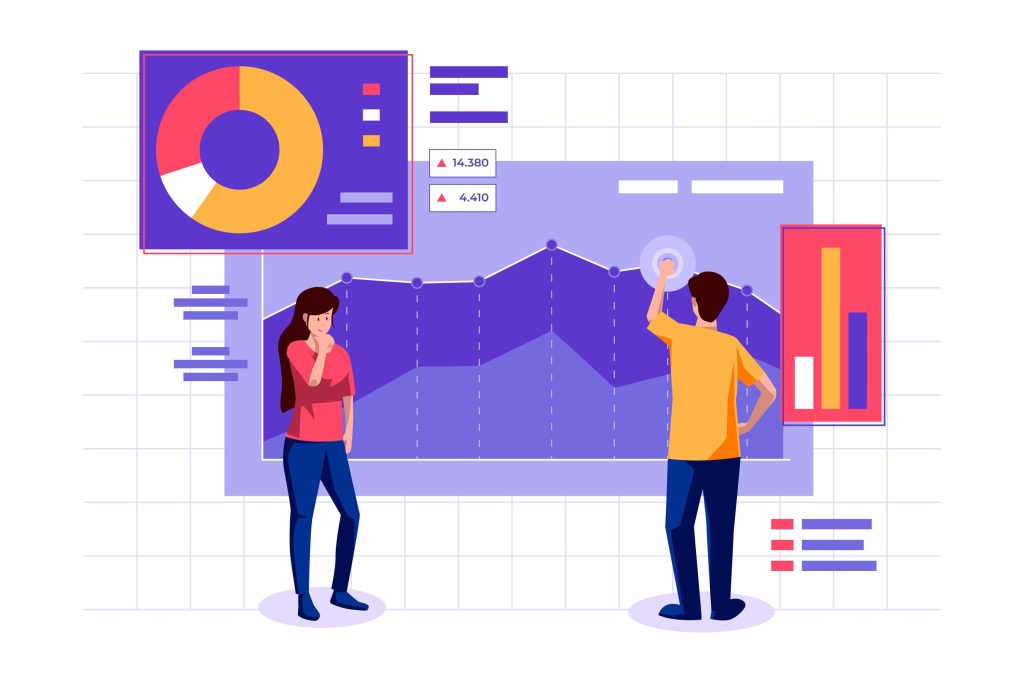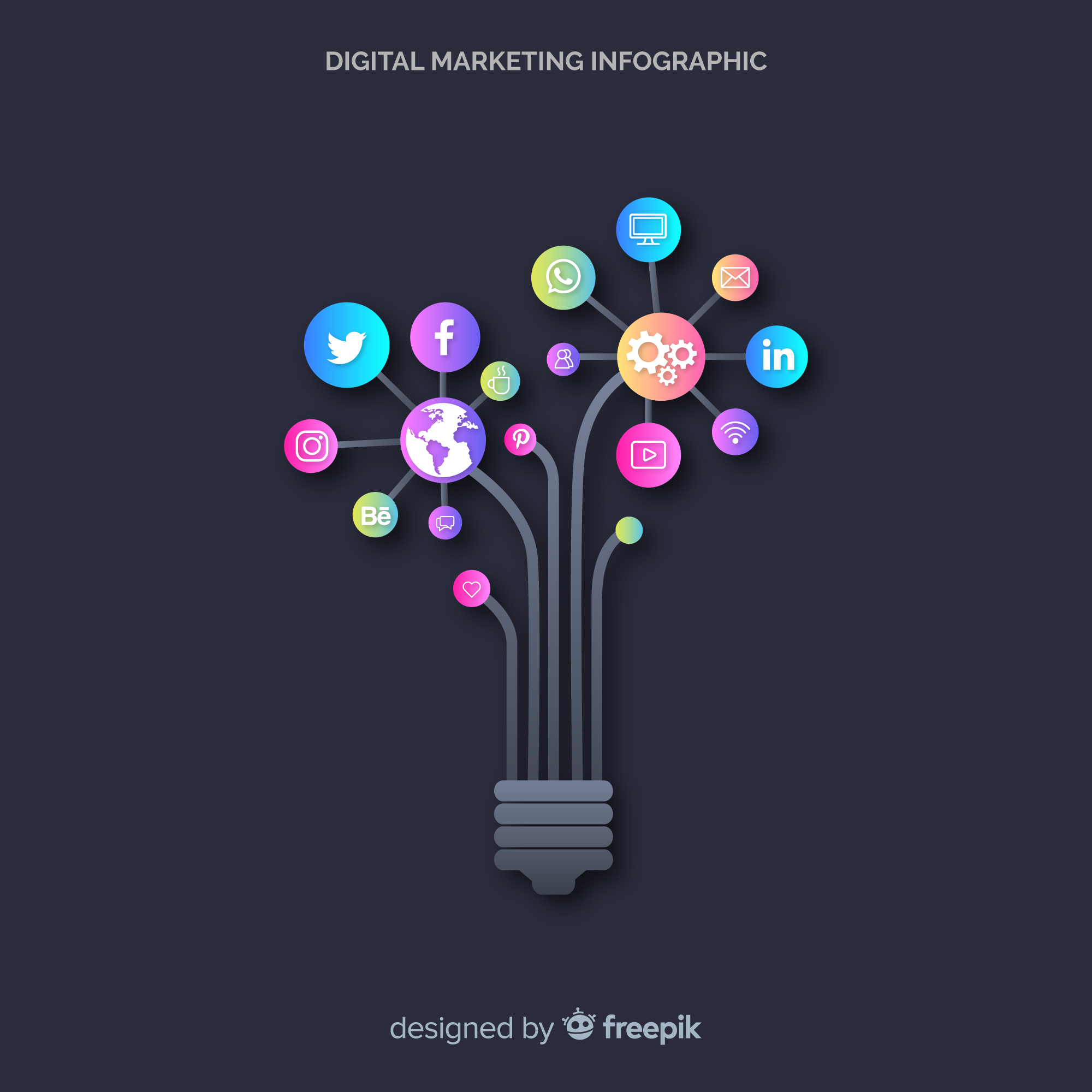In 2025, the world of digital marketing is evolving rapidly. As technology advances, so does the complexity of the strategies that businesses need to implement to stay ahead of the competition. Digital marketing agencies are embracing this shift by merging data and creativity in ways that were once considered separate entities. But today, these two forces are working together to produce campaigns that are not only innovative but also highly effective.
In this blog, we’ll explore how agencies are blending data-driven insights with creative strategies to deliver outstanding results for their clients. We’ll look at the tools and techniques agencies are using to stay competitive in the ever-changing landscape of digital marketing.
1. The Importance of Data-Driven Decision Making
One of the biggest changes in digital marketing in recent years is the shift toward data-driven decision-making. Marketers now have access to a wealth of data that can help them understand customer behavior, preferences, and trends. But it’s not just about collecting data—it’s about using it to drive actionable insights.
Understanding Your Audience Through Data …
Data allows agencies to understand who their audience is, what their pain points are, and how they interact with different marketing channels. By analyzing metrics such as website traffic, social media engagement, and conversion rates, agencies can gain valuable insights that help refine marketing strategies.
Improving Personalization …
Data enables agencies to create highly personalized experiences for consumers. By leveraging data from customer interactions and behavior, agencies can deliver targeted ads, content, and offers that resonate with individual preferences. This personalization drives better engagement and higher conversion rates.
Predicting Future Trends …
Data analytics also allows agencies to predict future trends and customer behavior. By analyzing past behaviors and market trends, agencies can forecast what their target audience will be interested in next, helping businesses stay ahead of the curve.

2. Creativity: The Heart of Digital Campaigns
While data is essential for understanding audience behavior and optimizing campaigns, creativity is what gives those campaigns life. Creative strategies help differentiate brands in a crowded marketplace and resonate emotionally with customers. Here’s how agencies are combining data and creativity:
Data-Inspired Creativity …
Data and creativity are no longer seen as opposing forces. Instead, data informs creative decisions. For example, by understanding which type of content drives the most engagement, agencies can create videos, blogs, or infographics that are more likely to resonate with their audience.
Storytelling and Emotion …
Creativity in digital marketing often comes down to storytelling. Brands that tell compelling, emotionally-driven stories are able to forge deeper connections with their audience. Data can provide insight into what stories will resonate best, allowing agencies to craft content that taps into the emotions of their audience.
Interactive and Engaging Content …
Creative campaigns today are not just about one-way communication. Agencies are leveraging interactive content like quizzes, polls, and augmented reality (AR) experiences to engage users. Data helps guide the creative process by highlighting what types of interactive content perform best for specific demographics.
3. Integrating Technology to Enhance Creative Campaigns
Technology has become a key player in enhancing both data-driven and creative strategies. With the rise of AI, machine learning, and automation, agencies are able to streamline their processes and make their campaigns even more effective.
Artificial Intelligence and Machine Learning …
AI and machine learning are revolutionizing how agencies approach digital marketing. These technologies help agencies predict customer behavior, automate repetitive tasks, and deliver more personalized experiences at scale. For example, AI can optimize ad targeting, ensuring that creative content reaches the right audience.
Automation for Efficiency …
Automation tools are helping agencies save time and improve the efficiency of their campaigns. Automated email sequences, social media posting, and content scheduling allow agencies to focus more on strategy and creativity. Additionally, automation helps maintain consistency across campaigns, ensuring that creative messages are delivered to audiences at the right time.
Augmented Reality (AR) and Virtual Reality (VR) …
AR and VR are cutting-edge technologies that allow agencies to create immersive experiences for customers. Data helps agencies understand how users are interacting with AR and VR, allowing them to refine their campaigns and improve engagement. For example, brands can create virtual showrooms or use AR filters in social media ads to drive customer interaction.

4. The Role of Collaboration Between Data Scientists and Creatives
One of the most important trends in 2025 is the collaboration between data scientists and creative teams within agencies. Historically, these two groups worked in silos, but now they are coming together to create more effective campaigns.
Bridging the Gap Between Data and Creativity …
Data scientists bring analytical expertise, while creative professionals bring the artistic vision. By working together, they can ensure that campaigns are both effective and imaginative. This collaboration ensures that data isn’t just used for optimization—it also serves as a foundation for the creative process.
Cross-Disciplinary Teams …
Agencies are increasingly forming cross-disciplinary teams where data analysts, creatives, and strategists work side by side. This collaborative approach ensures that all aspects of a campaign, from data analysis to content creation, are aligned with business goals and customer needs.
Fostering Innovation Through Collaboration …
When data scientists and creatives collaborate, it fosters innovation. Creative teams can push boundaries while relying on data to test new ideas, ensuring that their innovative concepts have a high chance of success.
5. Measuring Success: Analytics and Reporting
Finally, measuring the success of campaigns is essential for understanding how well the blend of data and creativity is performing. Agencies are leveraging advanced analytics tools to measure the effectiveness of their campaigns in real time.
Key Performance Indicators (KPIs) …
Agencies track KPIs like conversion rates, ROI, customer acquisition cost (CAC), and engagement metrics to assess campaign performance. These KPIs provide insight into which aspects of the campaign are working and which need improvement.
Real-Time Reporting …
With real-time reporting tools, agencies can monitor the performance of their campaigns as they unfold. This allows them to make adjustments quickly and optimize campaigns for better results.
Continuous Improvement …
The best campaigns are those that evolve over time. By analyzing data and measuring success, agencies can continuously improve their creative strategies, ensuring that they remain relevant and impactful.
Conclusion: Merging Data and Creativity for a Winning Formula
As digital marketing continues to evolve, the most successful agencies are those that understand the power of both data and creativity. By merging these two forces, agencies can create campaigns that are not only innovative and engaging but also highly effective in reaching their target audience. In 2025 and beyond, the key to success will be a balanced approach that combines the precision of data with the emotional appeal of creative strategies.
Agencies that embrace this integrated approach will be better positioned to deliver campaigns that drive results, build brand loyalty, and stay ahead of the competition.





